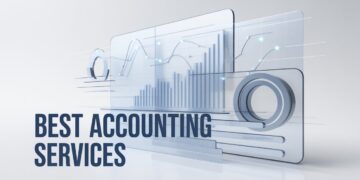As student loan interest continues to climb and federal repayment protections shift under new legislation, borrowers are reevaluating their strategies for managing education debt. Refinancing, once a niche option, has become an increasingly common financial move for graduates seeking lower rates and more favorable terms. In 2025, the landscape for refinancing student loans is shaped by economic trends, lender competition, and major changes in federal repayment programs.
This comprehensive guide on Student Loan Refinance: Best Options for 2025 will help you navigate the best refinancing options, understand when refinancing makes sense, and how to avoid potential pitfalls in a changing financial environment.
Understanding Student Loan Refinancing
What Is Student Loan Refinancing?
Student loan refinancing is the process of taking out a new loan with a private lender to pay off one or more existing student loans. The primary motivation is to obtain a lower interest rate, reduce monthly payments, or change loan terms (such as repayment length or borrower protections).
Refinancing differs from federal loan consolidation, which is a government program that combines federal loans into one without lowering the interest rate.
Who Should Consider Refinancing?
Refinancing isn’t for everyone. It’s ideal for borrowers who:
- Have high-interest private or federal loans
- Possess strong credit (typically above 680)
- Enjoy a stable income
- Don’t need federal benefits like income-driven repayment (IDR) or Public Service Loan Forgiveness (PSLF)
In 2025, with federal loan rates averaging 6.39% for undergraduates and 7.94–8.94% for graduate loans, refinancing becomes increasingly attractive for those with solid financial standing.
Pros and Cons of Refinancing
Pros:
- Lower interest rates and monthly payments
- Simplified repayment through loan consolidation
- Option to release a co-signer from the original loan
Cons:
- Loss of federal protections and benefits
- Requires good-to-excellent credit
- Not accessible to everyone (especially those with unstable income)
How the 2025 Economic Landscape Affects Refinancing
Federal Loan Policy Changes
Recent federal legislation is reshaping the repayment structure:
- Interest resumes on SAVE plan as of August 1, 2025, ending a temporary subsidy.
- New Income-Based Repayment (IBR) and Repayment Assistance Plan (RAP) are set to replace existing plans by July 1, 2028.
- Forgiveness timelines and borrower income caps will begin to phase in gradually, altering long-term strategy for federal borrowers.
These policy updates may make private refinancing more appealing, especially for borrowers no longer eligible for or interested in federal relief programs.
Interest Rate Environment
With the Federal Reserve signaling rate stability and gradual cuts by late 2025, private lenders are beginning to offer competitive fixed and variable rate loans. However, market conditions remain volatile, making it essential to lock in low rates when available.
Inflation and Borrower Behavior
Inflation remains a persistent concern in 2025, affecting everything from household budgets to borrowing decisions. Many borrowers are looking for financial certainty, prompting a rise in fixed-rate refinances. Lenders have responded by offering longer terms and flexibility features to remain competitive.
Top Lenders for Student Loan Refinance: Best Options for 2025
Here are the best-rated refinancing lenders in 2025 based on rates, borrower benefits, flexibility, and customer satisfaction.
1. Earnest
Best For: Customization and flexibility
Minimum Credit Score: 650
Fixed Rates: Starting at 4.99% APR
Variable Rates: Starting at 5.29% APR
Unique Feature: Skip a payment once per year without penalty
Earnest offers in-depth customization, allowing borrowers to choose exact repayment terms from 5 to 20 years. The platform also supports non-traditional borrowers, including international graduates with co-signers.
2. SoFi
Best For: Additional member benefits
Minimum Credit Score: 680
Fixed Rates: From 5.00% APR
Variable Rates: From 5.49% APR
Unique Feature: Career coaching and unemployment protection
SoFi continues to attract high-earning professionals with perks like financial planning and wealth management.
3. ELFI (Education Loan Finance)
Best For: High-income professionals
Minimum Credit Score: 680
Fixed Rates: As low as 4.98% APR
Variable Rates: 5.45% APR and up
Unique Feature: Personalized customer service with a dedicated advisor
ELFI remains a top option for medical and graduate school borrowers who want tailored support.
4. LendKey
Best For: Access to community lenders
Minimum Credit Score: 660
Fixed Rates: Starting at 5.10% APR
Variable Rates: Starting at 5.35% APR
Unique Feature: Works with credit unions and local banks
Borrowers with excellent credit can often find competitive rates through smaller institutions via LendKey’s marketplace.
5. RISLA (Rhode Island Student Loan Authority)
Best For: Borrowers seeking a nonprofit option
Minimum Credit Score: 680
Fixed Rates: As low as 5.49% APR
Unique Feature: Offers income-based repayment even for refinanced loans
Unlike most private lenders, RISLA provides federal-style borrower protections.
6. Laurel Road (A Division of KeyBank)
Best For: Health professionals
Minimum Credit Score: 660
Fixed Rates: From 4.99% APR
Unique Feature: Special rates for doctors, dentists, and nurses
Laurel Road is a strong choice for medical and dental professionals, with tailored refinancing options and service.
How to Refinance Student Loans in 2025
Step 1: Check Your Credit and Improve It If Necessary
Lenders offer the best rates to borrowers with excellent credit. Review your credit report and aim for a score of 700+. Take time to pay down debts, reduce credit utilization, and avoid new inquiries to improve your score before applying.
Step 2: Compare Multiple Offers
Use prequalification tools to compare rates from several lenders without impacting your credit score. Look beyond the APR to consider origination fees, deferment options, forbearance terms, and borrower protections.
Step 3: Choose the Right Terms
Decide whether a fixed or variable rate works best for you. Fixed rates offer stability, while variable rates may start lower but carry the risk of increasing over time. Also consider the repayment term: shorter terms save more in interest but have higher monthly payments.
Step 4: Apply and Submit Documents
Prepare documentation such as:
- Proof of income (pay stubs, W-2s, tax returns)
- Student loan statements
- Government-issued ID
- Social Security number and employment verification
Apply online through your chosen lender. Most processes are streamlined and digital.
Step 5: Finalize the New Loan
Once approved, your new lender will pay off your old loans. You’ll begin repayment under the new terms, usually within 30–60 days.
Step 6: Monitor Your New Loan and Stay Informed
Use your lender’s online dashboard or mobile app to set up autopay and track payments. Stay informed about refinancing offers in case future rates drop and refinancing again becomes beneficial.
Risks of Refinancing Student Loans
Loss of Federal Protections
Refinancing federal student loans with a private lender means giving up access to:
- Income-driven repayment plans
- Federal deferment and forbearance options
- PSLF and other forgiveness programs
These benefits may be critical in times of financial hardship or public service employment.
Potential for Higher Total Costs
Longer repayment terms may reduce monthly payments but increase total interest paid over time. Borrowers should calculate long-term costs before selecting extended plans.
Limited Flexibility with Private Lenders
While some private lenders offer borrower protections, they are generally less robust than federal options. Late fees, fewer forbearance opportunities, and strict refinancing requirements may apply.
2025-Specific Considerations for Borrowers
Medical Professionals
Laurel Road and ELFI cater specifically to doctors, residents, and dentists with options like:
- Deferred payments during residency
- Special low-rate programs
- Refinancing Parent PLUS loans in a child’s name
Parent PLUS Borrowers
Parents can refinance to reduce their interest rate or change the loan holder. Some lenders allow the debt to be transferred to the student, provided they qualify.
Borrowers Without Degrees
Certain lenders like LendKey and Earnest now support refinancing even if you didn’t complete your degree. This expands access for career changers or those returning to school.
International Borrowers
Earnest and Prodigy Finance offer solutions for non-U.S. citizens, provided you have a co-signer or U.S. employer.
Graduates with Variable Income
Gig workers or freelance professionals may face difficulty qualifying for refinancing. Consider lenders with flexible income assessment or larger emergency forbearance programs.
Frequently Asked Questions (FAQs)
Can I refinance both federal and private loans together?
Yes. Many lenders allow you to combine both types into one new loan. However, doing so eliminates access to federal repayment plans and forgiveness programs.
What’s the difference between consolidation and refinancing?
Consolidation is a federal program combining loans without changing the interest rate. Refinancing is a private loan that may lower your rate but removes federal protections.
Does refinancing hurt my credit?
Using prequalification tools won’t impact your score. A hard inquiry during the formal application process may cause a slight, temporary dip.
Can I refinance more than once?
Yes. If your credit score improves or if market rates drop, refinancing again can save you more money. Many borrowers refinance multiple times to maximize savings.
Is refinancing a good idea in 2025?
If you have stable income, good credit, and no need for federal protections, refinancing in 2025 is a smart way to reduce your interest rate and pay off debt faster.
What if I lose my job after refinancing?
Some lenders offer temporary forbearance or deferment. SoFi and Earnest, for example, have hardship programs. Check your lender’s policy before applying.
Conclusion
Refinancing student loans can be a powerful tool to manage debt more effectively. In 2025, the best refinancing options offer low rates, borrower-focused terms, and support for various professional paths. However, the decision to refinance should be grounded in a clear understanding of your financial situation, future plans, and how refinancing fits into them.
By comparing multiple lenders and staying informed about policy changes, you can make a smart, strategic move to optimize your student loan repayment. For many borrowers, Student Loan Refinance: Best Options for 2025 marks a key turning point in financial independence and long-term savings.
Whether you’re a recent graduate, a medical resident, a parent, or a mid-career professional, understanding the nuances of student loan refinancing in 2025 will empower you to make choices that align with your goals—and ultimately, reduce your financial stress for years to come.












